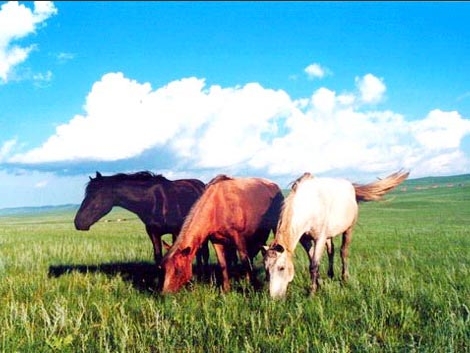
As nomadic people, Mongolia people love their livestock as their children. When people are celebrating the Spring Festival, the livestock has one as well. Festival for Livestock is called Maliyinxinaoruluru in Mongolian, which could be translated as "Spring Banquet", a traditional custom with long history. Without fixed date, it is held in each village around January and Tomb-sweeping Day in lunar calendar with each village as an independent unit. At that time, all the people gather in the open before staking tents and setting up kitchen ranges. All the livestock are driven together for examining the body condition. Birth of lambs and calves in the next spring is studied and the strong herd headers are decorated with bright ribbons. There are also wrestling, story-telling, singing and Haolaibao, etc followed with small-scale banquets.
Festival for Livestock of Sunite is held on the New Year's Eve and the game called painting the ram is the most important part. The children run like hot cakes to hold the horn of the ram and pull it forward before the banquet while the adults chanting verses after feeding the ram with butter and milk that are put in a silver bowl. The ram is released back to the herd with a Hada around its neck and yellow rice on its back. People spill milky tea on the ram, which is called painting the ram and means the prosperity of the livestock. Then the shepherd open the sheepfold and get ready for herding when the hostess runs out with a plate full of white oil, butter, acid oil, dried milk cake, cakes and other foods. All of these are called Miliedesi, which are given to the herdsman by the hostess. The herdsman takes over the Miliedesi and goes out following the herd.





